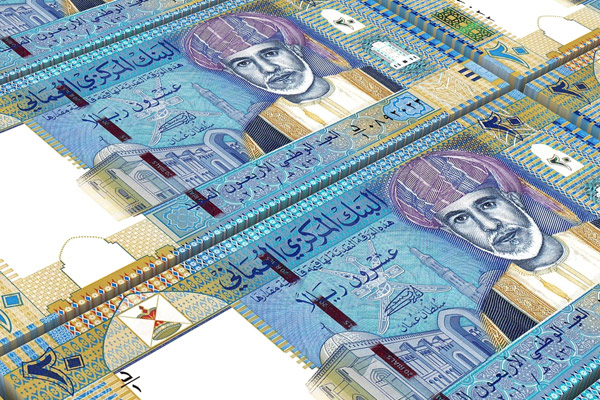
Oman assures dollar peg will stay
MUSCAT, February 2, 2016
Oman remains committed to the peg of its rial currency against the US dollar, the head of the central bank said on Tuesday, after the rial dropped to its lowest level in the forwards market for a decade.
Low oil prices are hurting Oman's state finances and depleting its foreign reserves, fuelling speculation among some foreign bankers that it may eventually have to abandon the peg of 0.3849 rial to the dollar, set in 1986.
One-year dollar/rial forwards - deals that will be settled in 12 months' time - jumped on Monday as high as 1,500 points, their highest since 2006. That implied the rial would depreciate about 4 percent from its peg.
Forwards came down slightly to 1,400 points by Tuesday afternoon, but currency dealers said the market's move this week showed some bankers were identifying the Omani rial as the most vulnerable currency in the six-nation Gulf Cooperation Council of wealthy oil exporters.
"The currency pegs in Oman and Bahrain are not robust to severe terms-of-trade shocks, and sustainability issues may become increasingly more pressing over the next 12-24 months if oil prices stay at below $60-$70 per barrel," Goldman Sachs said in a research note in late January.
A dealer with a foreign bank in the Gulf, speaking on condition of anonymity because the matter is sensitive, said: "Oman is the weakest link in the GCC and its peg may come under pressure as early as end-2016."
Bahrain and Oman lack the deep financial resources of their neighbours and while Bahrain is widely believed to be able to count on financial support from Saudi Arabia, to which it is closely allied politically, the markets believe Oman may not have such automatic backing.
That has left traders focusing on the damage which cheap oil is doing to Oman's state finances. The government posted an $11.7 billion deficit last year and has forecast another big deficit this year despite spending cuts.
The plunge of the Brent oil price to near $30 a barrel, from around $100 18 months ago, has created some unease about all the GCC currencies. But the UAE, Qatar and Kuwait have hundreds of billions of dollars of overseas assets and small populations, so the markets think they are safe for now.
Saudi Arabia's riyal has come under pressure in the forwards market but that pressure has eased since Riyadh warned banks not to speculate against its currency and threatened to mobilise its huge reserves against speculators.
Central bank executive president Hamood Sangour Al-Zadjali told Reuters on Tuesday that Oman had no intention of altering its currency peg.
"Nothing changed. We are committed to the peg with the USD. The interest rate hasn't changed," he said, adding that the rial's weakness in the forwards market might be partly due to the strength of the US dollar globally.
Nevertheless, speculation against the rial may continue unless there is a substantial rebound of oil prices. The Goldman Sachs report estimated the probability of a devaluation in Oman could reach over 80 percent within three years.
Keen to boost economic growth, the Omani central bank has so far resisted pressure to raise its official interest rates in line with the US Federal Reserve, which hiked rates by 0.25 percentage point in December.
Within hours of the US hike, Saudi Arabia, the UAE, Kuwait and Bahrain raised their rates in what was seen by markets as a signal that they would defend their currency pegs. - Reuters







